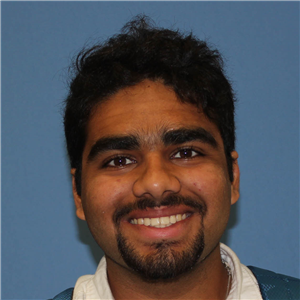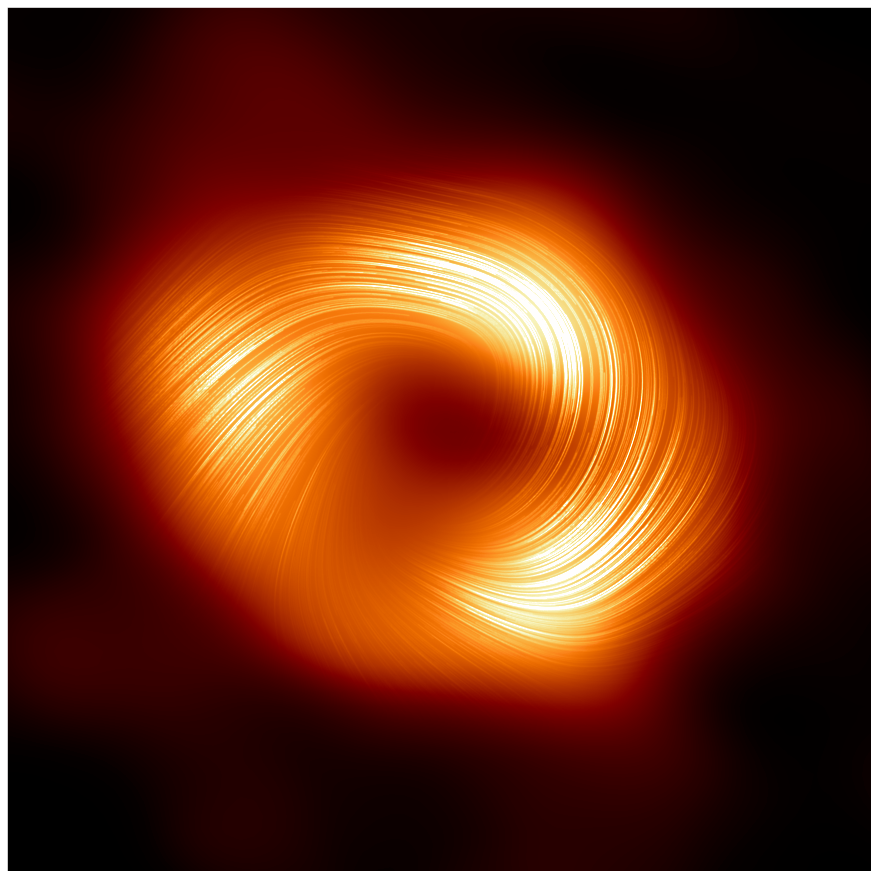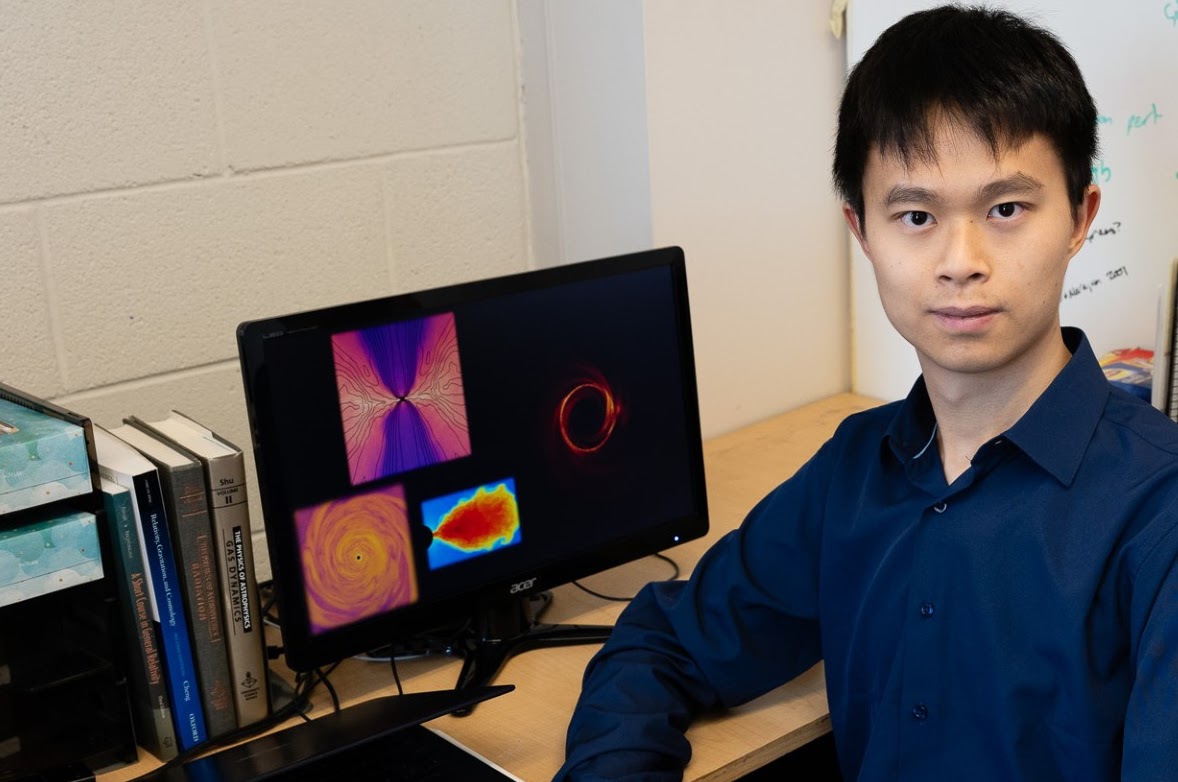Junior researchers advance black hole research with OSPool open capacity
April 29, 2024Some of the greatest scientists and researchers the world has ever seen made their greatest contributions before the age of thirty. From Albert Einstein to Sir Isaac Newton, history shows that young scientists can greatly advance their field of research provided they have the opportunity and resources to do so. The Event Horizon Telescope (EHT) Collaboration — which is propelled forward by the innovative work of its junior researchers — is an example of young scientists at work making important contributions to science.
Postdoctoral fellow Angelo Ricarte and graduate students Abhishek Joshi and Leon Chan are three EHT junior researchers currently making waves in black hole research. The EHT Collaboration that these researchers contribute to has been making advances in black hole research for over a decade. The collaboration’s goal is to capture detailed black hole images by creating a virtual earth-sized telescope. These images are then analyzed through running a multitude of simulations by replicating the flow of matter and light in the warped space-time of a black hole.
Ricarte, Joshi, and other team members have recently focused on making images of the black holes through polarized light, which can help create distinctions between simulations. With this new element, they must now consider another parameter for every step of the process. What originally took 5 million computational tasks to perform the necessary simulations now takes around 20 million whilst considering polarized light.


That’s why the EHT collaboration looked toward the Open Science Pool (OSPool) in 2022. The OSPool provides open, freely available capacity available to any researcher affiliated with a U.S. institution, including junior researchers, who typically have limited funding for computing. The open capacity of the OSPool can be a significant asset for young researchers seeking to participate in cutting-edge research. “In the past, creating a whole new simulation library for even one additional parameter would have been too time consuming.” Joshi explained, “Now, it’s actually possible to do it.”
This capacity enabled Ricarte, one of the leads of two recent collaborative papers dealing with the telescope results, to make new discoveries. The papers unveil a new black hole image that shows “strong and organized” magnetic fields spiraling from the edge of Sgr A. This is the very first polarized image of Sgr A, and the magnetic field structure hints that strong magnetic fields may occur around all black holes. Ricarte stresses the important role polarized light has played in a recent press release, noting that “Polarized light teaches us a lot more about the astrophysics, the properties of the gas, and mechanisms that take place as a black hole feeds.”

As the EHT provides more accurate observations, it also starts to unveil limitations of theory and simulations. Leon Chan, a graduate student in astrophysics at the University of Colorado and a Croucher Scholar, has been working on addressing such a limitation identified by the EHT Collaboration. His research focuses on understanding why current black hole simulations twinkle much more than what is seen from the EHT. Suspecting electron temperature, he and his collaborators decided to take pictures of the simulations with differing electron temperatures. This required a large amount of calculations, and the OSPool was able to help with this problem as well. “It was out of the capability of traditional HPC,” Chan said. In their recent publication, they discovered that the light ring of the black hole was the major source of twinkling, and by making electrons cooler and the gas more opaque, he and his collaborators were able to block the light ring from twinkling.

With capacity contributed by more than 50 institutions, many of which were granted awards by the NSF CC* program, the EHT Collaboration has generated over 10 million black hole images and 5 million black hole spectra, taking an estimated 50 million core hours. This availability of open capacity has contributed to the ability of Ricarte, Joshi, Chan and others like them to make new discoveries early in their careers, equipping them to tackle some of the most challenging questions in astrophysics.
